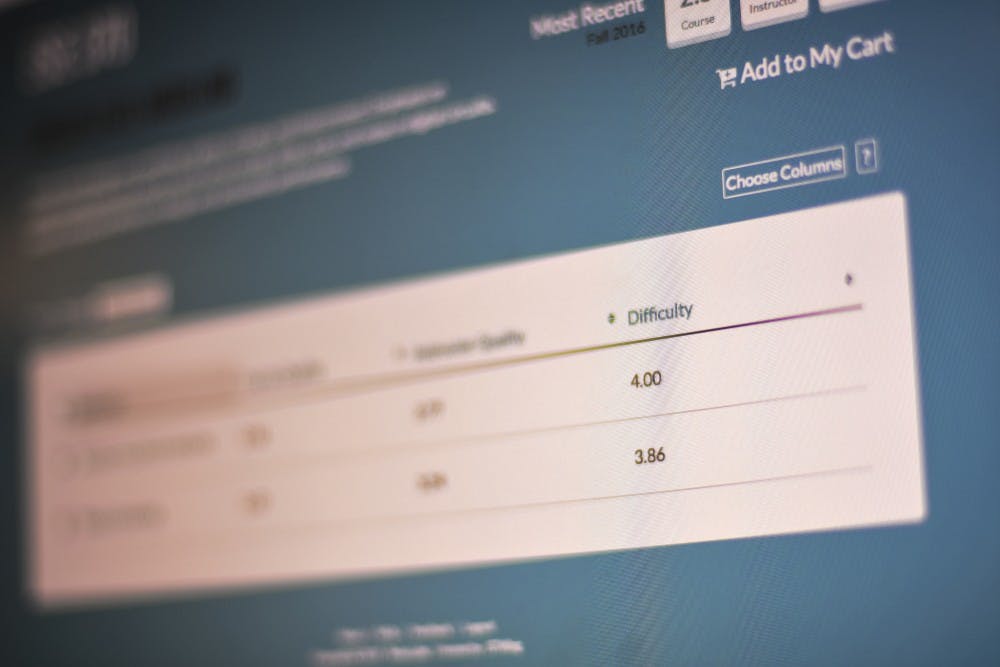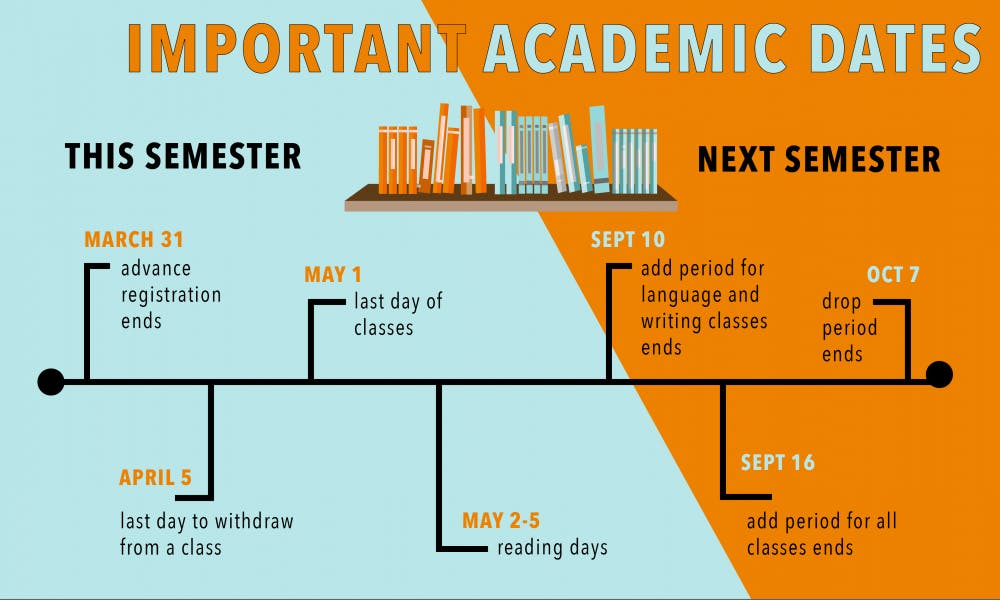
Penn course review is a website that allows students to compare the quality and difficulty of different courses and professors.
Credit: Joy LeeAdvance course registration for fall 2019 is underway. Here's what you need to know to maximize your chances of securing the classes you want.
Key dates to know
March 31 is the last day for advance registration, which started on March 18, for fall 2019.
Next semester, the course selection add period for language and writing classes will end on Sept. 10, and the add period for all other classes will end on Sept. 16. Oct. 7 will be the last day to drop a class.
[Here are the College courses that double-count for fall 2019]
Advice from upperclassmen
Students should rank smaller courses and more popular courses near the top of one's list on Penn InTouch. For clinical courses in the Nursing School, for example, students are advised to list the clinical and lab before the lecture, because clinical and lab sections held during popular times are more difficult to get into than larger lectures.
“The ranking is really important for those who have a harder time getting into certain classes. You definitely want to make sure you rank them and then put an alternate,” Nursing and Wharton senior Sydney Liu said.
But even if they rank their most favored class towards the top, students vying to gain entrance into traditionally popular courses, such as Computer and Information Science classes, may face challenges. In spring 2018, the CIS elective class "Applied Machine Learning," which caps enrollment at 150, had 377 waitlist entries.
Engineering junior Annemarie Jacob said registering for her bioengineering classes is a relatively easier process than attempting to get into CIS courses.

Jacob added that the School of Engineering and Applied Science has a rigid schedule for its mandatory classes, which sometimes leave students with little freedom of choosing electives. She said many students typically have to wait until their senior year before they can get their top choices for elective courses.
For students in other schools, the registration process is typically less challenging.
“I have been pretty lucky. So far I have gotten through pretty much all of the classes that I requested and I usually don’t put an alternate,” Wharton sophomore Julian Ford said.
Students are also recommended to pair the two most important courses together as primaries and alternates in their first and second choices. For example, if students want to enroll in a writing seminar and a CIS elective, they are recommended to put the writing seminar as their primary in the first choice and list the CIS elective as the alternate in the first choice. In the second choice, the CIS elective should be the primary and the writing seminar the alternate.
Classes to take
In the College and looking for courses that double-count and satisfy two requirements? Here is a comprehensive listing of courses that double-count for fall 2019.
The Daily Pennsylvanian also ranked the top 10 easiest and most difficult courses based on data from Penn Course Review. ESE-370, Circuit Level Modeling, has the highest difficulty level, while MUSC-007, a Samba Ensemble class, has the lowest difficulty level. In September 2017, the DP profiled the Circuit Level Modeling course for a look into what Penn's hardest class looks like from the inside.
Here are some of the most interesting classes Penn offers, ranging from those focusing on existential despair to free speech and censorship.
The Daily Pennsylvanian is an independent, student-run newspaper. Please consider making a donation to support the coverage that shapes the University. Your generosity ensures a future of strong journalism at Penn.
Donate




